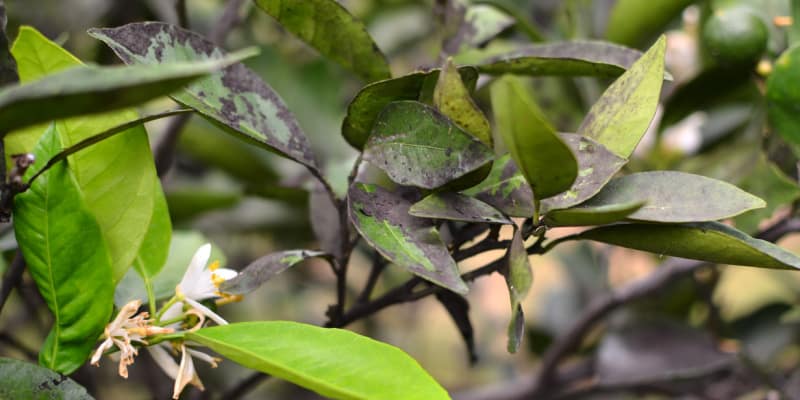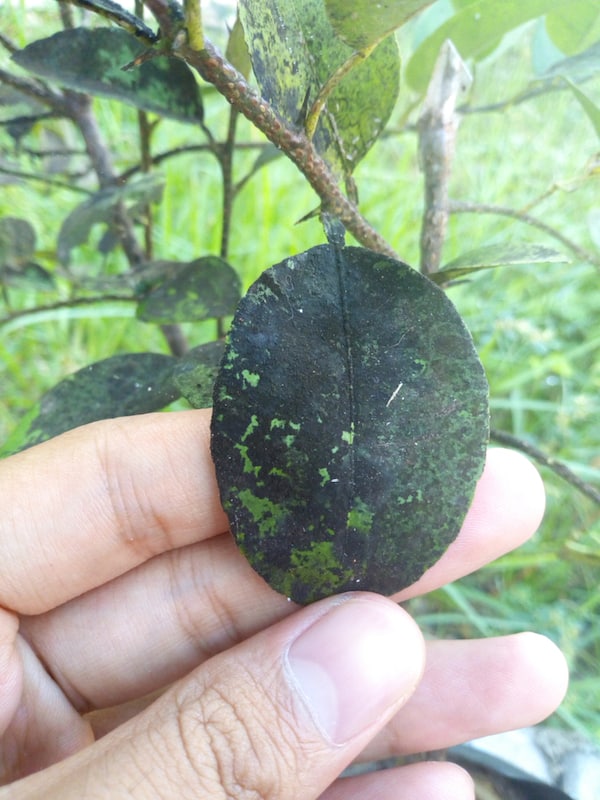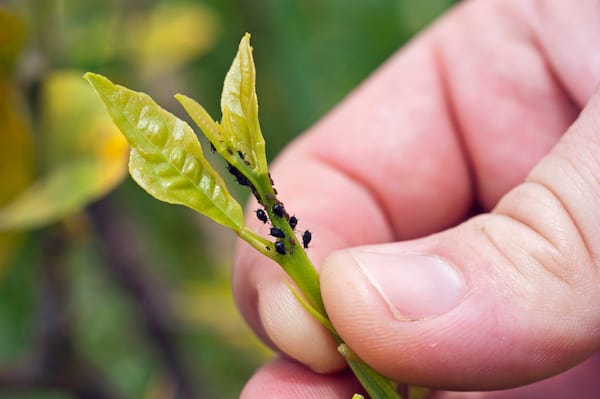
Why are my orange tree leaves turning black? – Black sooty mould
Our site is reader supported, this means we may earn a small commission from Amazon and other affiliates when you buy through links on our site.
It’s most probable that the reason your orange tree leaves are turning black is because of black sooty mould. This is a fungal disease that starts out small and spreads quite rapidly. The good news is that in itself this disease doesn’t do too much harm to your plant. The bad news is that it is a sign of a much bigger problem – bugs. Read on to find out what to do about black sooty mould and the underlying problems.
Black sooty mould
This fungal disease looks just like its name says – black soot. The signs of an infection start with small black spots of a powdery substance on the leaves and perhaps the stem of your orange tree. Over time, the spots grow larger and even join together, perhaps covering most of the leaf. This is when you notice that your orange tree leaves are turning black.
With most of its surface covered, each infected leaf can’t perform photosynthesis and create energy for the plant. This weakens the plant as it has less energy to maintain itself and to develop new growth, including buds, flowers and fruit.
But that’s a small problem compared to the reason the black sooty mould shows up.
The underlying problem
Honeydew
Black sooty mould grows on a clear, sticky substance called honeydew. If you look closely at the leaves, you see blobs of a clear, resin-like material. The blobs may be small but there’s probably quite a few of them.
Black sooty mould is attracted to this honeydew and grows very well there. But where does the honeydew come from?
Pests
Honeydew is secreted by sap-sucking insects. These are insects that infest your orange tree and suck away at the sap in the leaves and stems, and maybe the buds too. They leave the clear honeydew behind and the black sooty mould moves in. But that’s not the end of it – ants also like this substance and flock to it.
So if you find black leaves, the chances are that you have an infestation of bugs in your orange tree.
What to do
The good news is that it’s easy to get rid of the black sooty mould. Just wash it off carefully with mild soap and water. At the same time, you can scrub off (gently) the honeydew substance as well. Be careful not to pick up any stray insects along the way and accidentally move them to a different and healthy part of the orange tree.
It’s more difficult to deal with pests. But I have that covered in my article Orange tree pests and diseases. In that I give details about the most common sap-sucking insects and advice on how to get rid of them. Head over there for that useful information.
If you have curling leaves on your orange tree this can be caused by aphids which will lead to black leaves as well. Sticky leaves on your citrus orange tree, which is caused by a number of different sap-sucking pests, including aphids and mealybugs, can also lead to blackened leaves.

